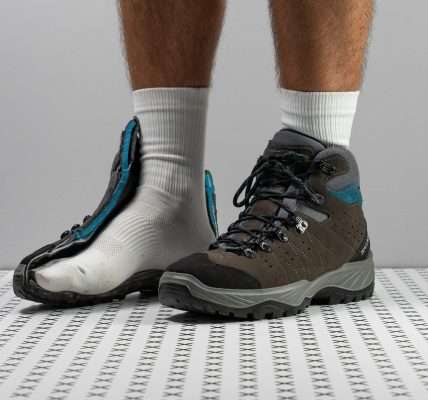Embarking on a hiking adventure is a truly enriching experience, allowing you to connect with nature and challenge yourself physically. However, unpredictable weather conditions can quickly dampen your spirits, especially if your hiking boots aren’t up to the task. Protecting your feet from moisture is paramount for comfort, blister prevention, and overall enjoyment on the trail. Learning how to make hiking boots waterproof is therefore an essential skill for any serious hiker, and it’s easier than you might think. This guide will equip you with the knowledge and techniques to effectively waterproof your boots, ensuring dry and happy feet on every hike.
Understanding Hiking Boot Materials and Waterproofing Needs
Different hiking boots require different approaches to waterproofing. The material of your boots plays a significant role in determining the best method. Let’s break down the most common materials:
- Leather: Leather boots are naturally water-resistant but need regular conditioning and waterproofing to maintain their performance.
- Synthetic: Synthetic boots are generally more water-resistant than leather but still benefit from waterproofing treatments.
- Combination: Many boots use a combination of leather and synthetic materials, requiring a blended approach to waterproofing.
Consider the climate and terrain you’ll be hiking in. Hikes in consistently wet environments, like rainforests or snowy mountains, will necessitate more frequent and rigorous waterproofing than hikes in drier climates.
Essential Waterproofing Techniques
Here’s a step-by-step guide on how to effectively waterproof your hiking boots:
1. Cleaning Your Boots
Before applying any waterproofing treatment, it’s crucial to clean your boots thoroughly. Remove any dirt, mud, or debris with a soft brush and warm water. For stubborn stains, use a boot-specific cleaner. Allow your boots to air dry completely before proceeding.
2. Choosing the Right Waterproofing Product
Select a waterproofing product appropriate for your boot material. Options include:
- Wax-based treatments: Ideal for leather boots, providing excellent water resistance and conditioning.
- Silicone-based sprays: Suitable for both leather and synthetic boots, offering good water repellency and breathability.
3. Applying the Waterproofing Treatment
Follow the manufacturer’s instructions carefully. Generally, you’ll apply a thin, even coat of the chosen product to the entire boot surface, paying particular attention to seams and areas prone to wear and tear. Allow the product to dry completely, as recommended, before wearing your boots.
Proper application ensures that your boots remain protected, and you can enjoy your hikes more comfortably. Repeat applications as needed, depending on the frequency of use and the severity of the weather conditions.
FAQ: Keeping Your Hiking Boots Dry
Here are some frequently asked questions about waterproofing hiking boots:
- How often should I waterproof my boots? It depends on how often you hike and the conditions you encounter. As a general rule, waterproof your boots every few months or whenever you notice water seeping in.
- Can I use household products to waterproof my boots? Avoid using household products like petroleum jelly or shoe polish, as they can damage the boot material.
- Will waterproofing affect the breathability of my boots? Some waterproofing products can slightly reduce breathability. Choose a product specifically designed for hiking boots to minimize this effect.
- My boots have a Gore-Tex lining. Do I still need to waterproof them? Yes, even boots with Gore-Tex linings benefit from regular waterproofing treatments to maintain their water repellency and prevent the outer material from becoming saturated.
Maintaining Waterproofing Over Time
To prolong the life of your waterproofed boots, store them in a cool, dry place away from direct sunlight. Avoid using harsh chemicals or abrasive cleaners. Regularly clean and condition your boots, and reapply waterproofing as needed. With proper care and attention, your hiking boots will remain waterproof and comfortable for many adventures to come. Investing time in learning how to make hiking boots waterproof pays dividends in comfort and performance on every trail you explore.


